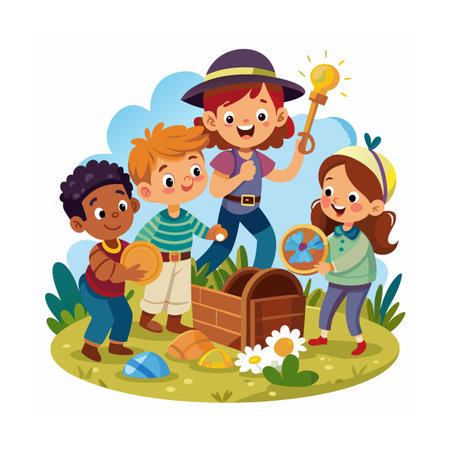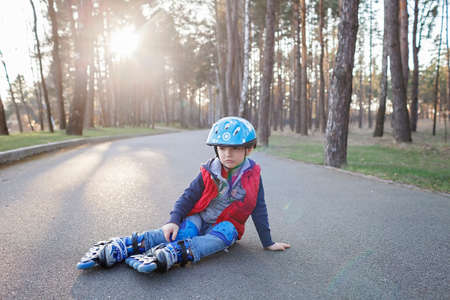1. Choosing the Perfect Educational Trail
Planning an amazing family day starts with picking the right trail that both entertains and educates your kids. The United States is home to hundreds of family-friendly educational trails, each offering unique learning opportunities and outdoor fun. Here’s how you can choose a trail that will keep every member of your family engaged:
Tips for Picking Family-Friendly Trails
- Look for Interactive Learning: Choose trails with hands-on activities, interpretive signs, or guided programs. Many national parks and nature centers offer scavenger hunts or Junior Ranger activities that make learning exciting.
- Consider Accessibility: Make sure the trail is suitable for strollers, wheelchairs, or little legs. Flat, paved, or well-maintained paths are great for families with younger children.
- Check for Age-Appropriate Experiences: Some trails have features geared toward specific age groups, like nature play areas, wildlife observation decks, or easy climbing rocks.
- Facilities Matter: Restrooms, picnic areas, and shaded spots can make your trip more comfortable. Check if these amenities are available before you go.
- Safety First: Choose trails with clear markings, gentle elevation changes, and good visibility to help keep your kids safe while exploring.
Trail Selection Guide: Top Features to Look For
| Feature | Why It Matters | Example Locations |
|---|---|---|
| Interpretive Signs | Makes learning about nature fun and accessible | Great Smoky Mountains National Park (TN/NC), Muir Woods (CA) |
| Paved/Flat Paths | Easier for strollers and young hikers | The High Line (NY), Crissy Field (CA) |
| Hands-On Programs | Keeps kids engaged with interactive activities | Sedgwick County Zoo Trails (KS), Boston Nature Center (MA) |
| Wildlife Viewing Areas | Adds excitement and real-life learning moments | Brazos Bend State Park (TX), Everglades National Park (FL) |
| Rest Stops & Facilities | Makes the outing more comfortable for everyone | Zion Canyon Scenic Drive (UT), Cuyahoga Valley Towpath Trail (OH) |
Quick Checklist Before You Go
- Research trail difficulty and length—make sure it matches your family’s abilities.
- Check official websites for maps, program schedules, and any park alerts.
- Pack snacks, water bottles, sunscreen, and hats for a stress-free adventure.
- If possible, download a trail app or print a map in advance for extra peace of mind.
2. Packing Smart for a Fun and Safe Hike
Family-Friendly Hiking Essentials
Packing right can make or break your family adventure on America’s best educational trails. The key is to balance comfort, safety, and learning opportunities. Here’s how to get everyone ready for a memorable day out.
What to Pack for Kids and Adults
| Item | Why It Matters | Tips |
|---|---|---|
| Kid-Friendly Snacks | Keep energy up and spirits high | Choose trail mix, granola bars, fruit pouches, or string cheese—easy to pack and mess-free! |
| Water Bottles | Stay hydrated all day long | Bring one per person; consider fun, colorful bottles for kids to encourage drinking water. |
| First Aid Kit | Be ready for scrapes or stings | Include band-aids, wipes, antiseptic, tweezers, and child-safe allergy medicine. |
| Weather-Appropriate Clothing | Comfort in any season | Layer up! Pack lightweight jackets, hats, sunscreen, and rain gear as needed. |
| Trail Map & Compass (or GPS) | Avoid getting lost on new trails | If using phones, download offline maps just in case you lose signal. |
| Learning Tools | Add an educational twist to the hike | Pocket field guides, nature bingo cards, magnifying glass, or binoculars for wildlife spotting. |
| Comfort Items for Kids | Keep little ones happy on the go | Packed favorite small toy, blanket, or sun hat can help with transitions or rest stops. |
| Sunscreen & Bug Spray | Protect skin from sunburns and bites | Choose family-friendly formulas. Don’t forget lip balm with SPF! |
| Backpack or Child Carrier | Carries essentials and helps tired legs | A child carrier backpack is great for younger kids; older kids can carry their own small packs. |
| Tissues & Hand Sanitizer | Cleans up messes fast | Essential for snack breaks and after exploring hands-on exhibits along the trail. |
Making Learning on the Trail Easy & Fun
- Create a Nature Scavenger Hunt: Print a simple checklist of things to spot—like acorns, birds, wildflowers—and let your kids mark them off as you explore.
- Use Educational Apps: Download kid-friendly apps like Seek by iNaturalist to identify plants or animals together. Just remember to bring a portable charger!
- Pocket Journals: Encourage each child to draw or write about what they see. It’s a great way to keep memories and reinforce learning at home later.
Quick Tips for Parents:
- Pace yourselves—plan plenty of breaks for snacks and discovery time.
- If hiking with toddlers, consider a short loop trail with interactive signs or activity stations.
- Always do a quick gear check before leaving the car—double-check water bottles and first aid supplies!
Your family will have everything they need for a safe, engaging day exploring America’s most educational trails together!

3. Making the Most of Trail Features and Activities
America’s best educational trails offer so much more than just a walk in the woods—they’re filled with fun features and activities designed to keep kids engaged and learning. Here’s how you can turn your family day into an adventure packed with hands-on discovery.
Engage Kids with Interpretive Signs
Many top trails have interpretive signs that share cool facts about local wildlife, plants, history, and geology. Take time to stop and read these signs together. Challenge your kids to find answers to questions like, “What animal lives in this habitat?” or “Why is this tree important?” This sparks curiosity and helps them connect with nature on a deeper level.
Scavenger Hunts: Turning Trails into Treasure Hunts
Scavenger hunts are a fantastic way to get kids moving and exploring. You can create your own list or check if the park offers printed scavenger hunt sheets at the visitor center. Here are some ideas for items you might include:
| Item to Find | Description |
|---|---|
| Pinecone | Look near coniferous trees along the trail. |
| A Bird’s Nest | Spot one up in the branches (observe from a distance). |
| Animal Tracks | Check muddy areas for footprints. |
| Wildflower | Identify its color or shape using a field guide. |
| Boulder with Lichen | Find rocks covered in colorful mossy growths. |
Create Nature Journals Along the Trail
Packing simple notebooks and colored pencils lets your kids become nature explorers and storytellers. Encourage them to draw what they see, jot down interesting facts from interpretive signs, or write about their favorite moment on the hike. This turns each outing into a personal keepsake they’ll love looking back on.
Nature Journal Prompts for Kids:
- Draw a picture of an animal you saw today.
- Write down three new things you learned from the trail signs.
- Describe how the forest smells or sounds in one sentence.
- Sketch a leaf or flower you found interesting.
- Create a map of your favorite part of the trail.
Use Digital Resources for Extra Fun
If your family enjoys technology, many educational trails now offer apps, QR codes, or audio tours you can access right from your phone. Some parks have interactive maps or digital field guides that help identify plants and animals as you explore. Just remember to set boundaries for screen use so everyone stays present and connected with nature!
4. Creating Lasting Memories with Family Traditions
Turn Every Hike Into a Cherished Family Tradition
One of the best ways to make your family day on America’s educational trails truly unforgettable is by building special traditions. These little rituals, games, and challenges can turn a single hike into an annual event everyone looks forward to. Here are some easy, fun ideas you can use to create lasting memories:
Fun Games to Play Along the Trail
| Game Name | How to Play | Why Kids Love It |
|---|---|---|
| Trail Bingo | Print out or draw bingo cards with things you might see (a squirrel, red leaf, river, etc.). Mark each item as you spot it on your hike. | Keeps kids engaged and encourages observation skills. |
| I Spy Nature Edition | Take turns saying “I spy with my little eye…” and describing something along the trail for others to guess. | Makes the walk interactive and fun for all ages. |
| Scavenger Hunt | Make a list of natural items or landmarks to find (pinecone, feather, animal tracks) and see who can find them first. | Adds adventure and a sense of discovery to the hike. |
| Naming Challenge | Challenge each other to name plants, trees, or animals seen on the trail. Use a guidebook or app for help! | Encourages learning about local ecology in a playful way. |
Photo Challenges That Tell Your Story
Create a yearly photo tradition! Each time you visit a trail, snap photos in the same spots or with the same pose. Try these ideas:
- The Annual Trailhead Selfie: Take a family selfie at the start of every hike. Watch how everyone grows and changes over the years!
- The Landmark Photo: Pick one recognizable spot—like a big rock or scenic viewpoint—and take a picture there every year.
- The Nature Collector: Let kids take turns being the “photographer” and capturing their favorite flower, bug, or tree.
- The Silly Pose Contest: At the halfway point, have everyone strike their silliest pose for the camera. Vote on the winner at home!
Family Rituals That Make Every Hike Special
Rituals are simple acts that add meaning to your trips. These can be unique to your family or inspired by American hiking culture:
- The First Step Cheer: Start each hike with a cheer or chant (“Go Team Johnson!”) for excitement and togetherness.
- Packing a Signature Snack: Bring a special treat that’s only eaten during your hikes—like homemade trail mix or grandma’s cookies.
- Telling Trail Stories: Share stories from past hikes during rest breaks, or let kids invent tales about the forest around them.
- The “Leave No Trace” Pledge: Recite a pledge before heading out to respect nature and pick up any litter you find along the way.
- The Annual Memory Jar: After each hike, have everyone write down their favorite moment on a slip of paper and add it to a jar at home.
Sample Family Tradition Schedule for Your Next Hike
| Time/Stop | Activity/Ritual |
|---|---|
| Trailhead (Start) | The First Step Cheer & group selfie |
| Mile Marker 1 | I Spy game & signature snack break |
| Main Landmark/Viewpoint | Silly Pose Contest & landmark photo |
| Mile Marker 2 (or halfway) | Telling Trail Stories & scavenger hunt results check-in |
| End of Trail | Pledge “Leave No Trace,” share memory highlights, add notes to Memory Jar at home |
Your Family’s Next Adventure Awaits!
Create your own unique blend of games, photo challenges, and rituals. The most important thing is having fun together while exploring America’s best educational trails—making memories that will last for generations!
5. Respecting Nature and Trail Etiquette
Teaching Leave No Trace Principles to Kids
When exploring America’s best educational trails with your family, it’s important to make sure everyone knows how to protect the outdoors. The Leave No Trace principles are a set of easy-to-follow guidelines that help keep nature beautiful for everyone. Here’s a simple way to share these with children:
| Leave No Trace Principle | What Kids Can Do |
|---|---|
| Plan Ahead & Prepare | Pack snacks, water, and a trash bag. Know the trail rules! |
| Travel & Camp on Durable Surfaces | Stay on marked paths and don’t step on plants or flowers. |
| Dispose of Waste Properly | Carry all trash out, even food scraps or wrappers. |
| Leave What You Find | Look at cool rocks or sticks, but leave them for others to enjoy. |
| Minimize Campfire Impact | If fires are allowed, use designated fire rings and always put them out fully. |
| Respect Wildlife | Observe animals from afar—never feed or chase them. |
| Be Considerate of Others | Keep voices down and share the trail with hikers, bikers, or horses. |
Fostering Respect for Wildlife and Plants
American trails are home to amazing creatures—from deer in the woods to eagles soaring above. Teach kids to love wildlife by reminding them:
- No Feeding: Wild animals should eat their natural foods—not our snacks!
- No Touching: Even friendly-looking animals or pretty flowers should be left alone.
- Use Binoculars: Bring a pair so kids can spot birds and animals without getting too close.
- Stay Calm: If you see wildlife, stop and watch quietly. This helps animals feel safe.
Connecting Kids With American Outdoor Culture
The U.S. has a rich tradition of exploring nature—think national parks, hiking clubs, and camping trips under the stars. Encourage your family to join in by:
- Telling Stories: Share legends about the land or read books about American explorers before your hike.
- Learning Local History: Many educational trails have signs about Native American heritage or pioneer life—stop and discuss these as you go.
- Packing an American Picnic: Enjoy sandwiches, apples, and trail mix just like families across the country do on outdoor adventures!
- Manners Matter: Greet other hikers with a friendly “hello” or “good morning”—it’s part of being part of the trail community in the U.S.
Your Family’s Role as Outdoor Stewards
By practicing good trail etiquette and respecting nature, your family becomes part of a bigger American tradition—helping protect wild places for future generations. Make it fun by giving each child a special role: one can be the “Trash Collector,” another the “Wildlife Watcher,” and another the “Trail Guide.” These small acts help create positive memories while teaching lifelong respect for America’s great outdoors.


